Choosing the right hinge? Our guide from xprimehardwares.com simplifies hinge selection for doors, cabinets, and furniture.
Welcome to the Xprime Hardwares blog! Whether you are an experienced DIYer or a beginner tackling your first home project, the seemingly small choice of the right hinge can significantly impact how well your doors, cabinets, and furniture work, how long they last, and even how they look.
At Xprime Hardwares, we know that the many types of hinges available can be confusing. That’s why we’ve created this complete guide. It will help you understand the world of hinges and select the perfect hardware for your specific needs.
Why the Right Hinge Matters
Hinges are more than just simple connectors. They are essential parts that allow movement and provide support. If you choose the wrong hinge, you might end up with doors that sag or cabinets that stick, leading to frustration. However, the right hinge ensures smooth operation, lasts a long time, and can even improve the look of your project.
Exploring Different Kinds of Hinges
Let’s look at some of the most common kinds of hinges you will find:
1. Butt Hinges:
- Description: These are the most common hinges. They have two flat, rectangular parts joined by a pin in the middle. You usually fit them into a recess in the door and frame.
- Common Uses: Inside and outside doors, light gates, some furniture.
- Pros: They are versatile, not too expensive, and come in many sizes and finishes.
- Cons: You can see them when the door is closed, and you need to install them carefully to line them up correctly.
2. Ball Bearing Hinges:
- Description: These look like butt hinges but have small ball bearings between the moving parts. This makes them open and close more smoothly and quietly.
- Common Uses: Doors used often, heavy doors, doors where you want quiet operation (like bedrooms and nurseries).
- Pros: They open and close smoothly and quietly, last longer, and can hold more weight.
- Cons: They usually cost more than standard butt hinges.
3. Washer Hinges:
- Description: These hinges feature a simple design with a pin that passes through knuckles, often with washers placed between them to reduce friction and wear. They are known for their robust and straightforward construction.
- Common Uses: Utility doors, gates, and applications where a strong, basic hinge is required.
- Pros: Durable, simple design, can often handle heavier loads compared to basic butt hinges.
- Cons: May not offer the smoothest operation compared to ball-bearing hinges, can be more visible.
4. Duck Overlay Hinges:
- Description: These are a type of concealed hinge designed specifically for overlay cabinet doors. The term “duck” refers to the way the hinge arm is shaped to allow the door to overlay the cabinet frame.
- Common Uses: Kitchen and bathroom cabinets with overlay doors.
- Pros: Provide a clean, concealed look when the cabinet is closed, often offer adjustability for door alignment.
- Cons: Can be more complex to install than traditional hinges, generally require specific boring patterns on the door and frame.
5. Butterfly Hinges:
- Description: Also known as decorative hinges, butterfly hinges feature leaves that resemble butterfly wings. They are often used to add an aesthetic element to furniture and smaller doors.
- Common Uses: Decorative boxes, jewelry boxes, small cabinet doors, and furniture where visual appeal is important.
- Pros: Highly decorative, adds character to projects, relatively easy to install for lighter applications.
- Cons: May not be as strong as other hinge types for heavier doors, primarily chosen for their appearance.
6. Parliament Hinges:
- Description: These hinges are designed to allow doors to swing a full 180 degrees and lie flat against a wall. They have a wider knuckle that offsets the door further from the frame.
- Common Uses: Situations where a door needs to be completely out of the way when open, such as in narrow corridors or against furniture.
- Pros: Allows for maximum door swing, ideal for maximizing space.
- Cons: Can be quite visible, might require more space for the wider knuckle, and may not be suitable for all door thicknesses.
7. Brass Butt Hinges:
- Description: These are butt hinges made from brass or with a brass finish. Brass is known for its corrosion resistance and attractive golden appearance, making these hinges a popular choice for both function and aesthetics.
- Common Uses: Interior and exterior doors, furniture, and marine applications where corrosion resistance is important.
- Pros: Corrosion-resistant, aesthetically pleasing, available in various sizes and finishes, can add a touch of elegance.
- Cons: Can be more expensive than steel butt hinges, softer than steel and might be less suitable for extremely heavy-duty applications.
How to Choose the Right Hinge for Your Project
To pick the best hinge for your project, think about these things:
- Weight and Size: Heavier doors and bigger panels will need stronger hinges, like ball-bearing or strap hinges.
- How Often It’s Used: If something will be used a lot, choose durable hinges like ball-bearing or continuous hinges.
- The Look You Want: Think about how you want your project to look and choose hinges that match the style. Concealed hinges give a modern feel, while strap hinges work well for rustic designs.
- Which Way It Swings: Make sure the hinge lets the door or panel swing the way you need it to.
- What It’s Made Of: Choose hinges made from materials that are suitable for where they will be used (for example, stainless steel for outdoors or damp areas).
- Your Budget: Hinge prices can vary quite a bit depending on the type and material. Consider what you need and what you can afford.
Hinge Selection Guide Based on Project Type:
- Doors: For inside doors, regular butt hinges or ball-bearing hinges are common choices. Outside doors often benefit from the strength of ball-bearing or heavy-duty butt hinges. For a modern look, consider pivot hinges.
- Cabinets: Concealed hinges are usually the best choice for modern kitchen and bathroom cabinets because they look clean and can be adjusted. Flush hinges can work for light cabinet doors.
- Furniture: The best choice depends on the style and how the furniture will be used. Butt hinges are useful for many furniture projects. Strap hinges can add a decorative touch. Continuous hinges are great for lids and surfaces that fold down.
Find Your Perfect Hinge at Xprime Hardwares!
At Xprime Hardwares, located right here in Jamnagar, Gujarat, we have a wide selection of high-quality hinges for all your project needs. Check out our collection online at xprimehardwares.com or visit our store to talk to our helpful team. We are here to help you find the perfect hinges to make sure your project is a success!

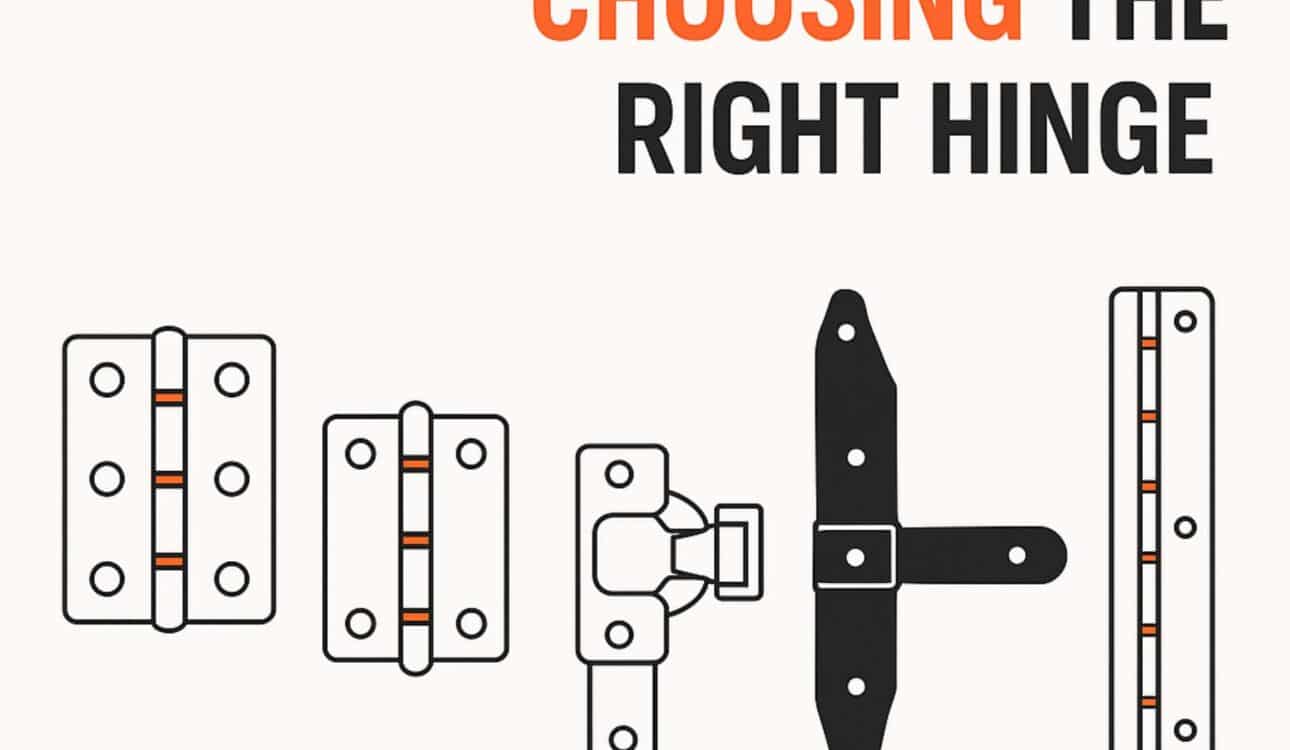
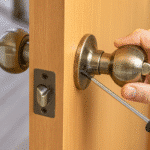
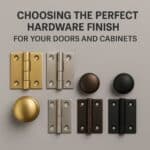
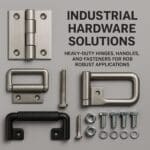
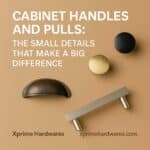
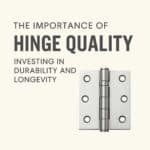
2 Comments
They have vast variety of products and are value for money too
Excellent product